Tracking Control
Developing Online Media Control

Late last month, the State Information Center, a policy think-tank under the Chinese government, released its 2021 China Online Media Development Report (中国网络媒体发展报告). Pitched as a broad overview of developments in the country’s online media industry, the report assesses 20 major online media platforms, including both state-owned media websites and private internet platforms.
The report notes general industry trends such as an increase in the impact of online news (versus traditional channels), a rise in the number of “online news users” (网络新闻用户), and the shift from “digitization” (数字化) to “digintelligence” (数智化) – meaning that platforms have applied AI solutions to online news products.
But the rankings in the SIC report, and the case studies cited in online media development, make clear that the report’s primary concern is to chart the effectiveness of online platforms in serving the news and information agenda of the Chinese Communist Party (CCP). As such, the report offers an interesting glimpse into CCP thinking on both the transformation of Party-led media and the operationalizing of private online platforms in the digital era.
Towing the Party’s (Digital) Line
In the report’s general ranking of the top-ten online media, the list is topped by People’s Daily Online, the web portal operated by the flagship newspaper of the Chinese Communist Party (CCP), and Xinhua Online, the online portal of the state news agency. Among private internet platforms surveyed, Tencent (腾讯) is ranked number three and Toutiao (今日头条) number eight. Phoenix Online and Sina.com, coming in at 9 and 10 on the list, are the only other two “private” online media to make the top-ten. Phoenix Online is the online portal operated by the partly state-held Phoenix TV, which in recent years has been more closely aligned with state agendas.
After opening with an emphasis on the leadership of CCP with comrade Xi Jinping as the “core,” the report’s preface says that “online media steadily increased positive propaganda and educational leadership” in 2021. Betraying the clear linkage in the report between CCP agendas and success metrics, the preface notes that “online media steadily enriched broadcast methods and content surrounding the national glories of the centennial of the CCP.”
Shanghai’s The Paper, under the state-owned Shanghai United Media Group (SUMG), is singled out for praise in the report for having seized a position in the top five. The Paper is the only “local online media” (地方网络媒体), the report says, meaning that it is Shanghai-based and therefore a municipal (provincial) versus central-level outlet. The report says that The Paper “further consolidated its influence and reputation as a leader in media integration development and as one of the benchmarks of new mainstream media on the internet.”

The reference to “new mainstream media” (新型主流媒体) further betrays the report’s emphasis on leveraging new media developments to modernize propaganda efforts. In the Chinese political context, the term “mainstream” refers specifically to Party-state media that play a front-line role in guiding public opinion. The “new mainstream media” refer to the digital outlets created by legacy Party media such as the CCP’s flagship People’s Daily at the central level, and The Paper at the regional level.
As the report addresses the “people’s livelihood” (民生) and “social welfare” (社会公益) as agendas for online media platforms, these are deeply enmeshed with the agenda of the CCP. The clear assumption is that the advancement of the Party’s agenda on “livelihood” issues by definition serves the public. It is not surprising, therefore, to find Party-run platforms topping both top-five lists for online media when it comes to both of these measures.
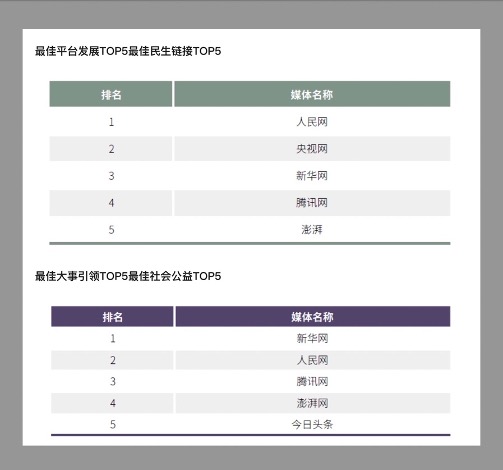
What kind of content at Chinese online media is the report prioritizing in making these rankings?
Moving down the top-five list under “people’s livelihood,” the report singles out an online “documentary” called “China Products” (物产中国) that was jointly released in January 2021 by The Paper and China Postal Savings Bank. The short film is a look at pig farming in a remote rural area of Sichuan that intersects with the state narrative about poverty alleviation, and even shows the protagonist, pig farmer Zheng Chihe (郑吃合), as he visits a local poverty alleviation official.
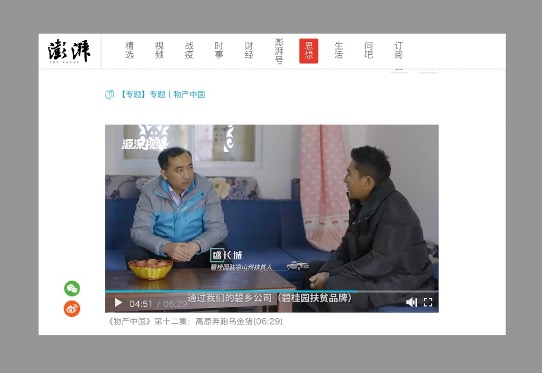
Once we are told by the narrating voice that Zheng Chihe has achieved his dream of raising pigs, the “China Products” documentary ends with an inset video message (over the credits) by a local county government official. The video is a fascinating and revealing look at how the CCP’s propaganda directives are pursued not just by central Party media (like People’s Daily Online), but by semi-commercial local outlets like The Paper, and in cooperation with corporate entities like the China Postal Savings Bank, a commercial retail bank formed in 2007.
Getting Technical About Propaganda
As online media are singled out in the SIC report for “technical layout of content” (内容科技布局), the clear focus is on innovation of propaganda content, the standard by which online media are being assessed. Examples given in the report include the establishment at CCTV.com of a virtual reality (VR) channel, which allows users full 360-degree interactive views of scenes testifying to the victory over Covid-19, the eradication of poverty, vibrant economic activity, or the government’s proactiveness in dealing with floods.
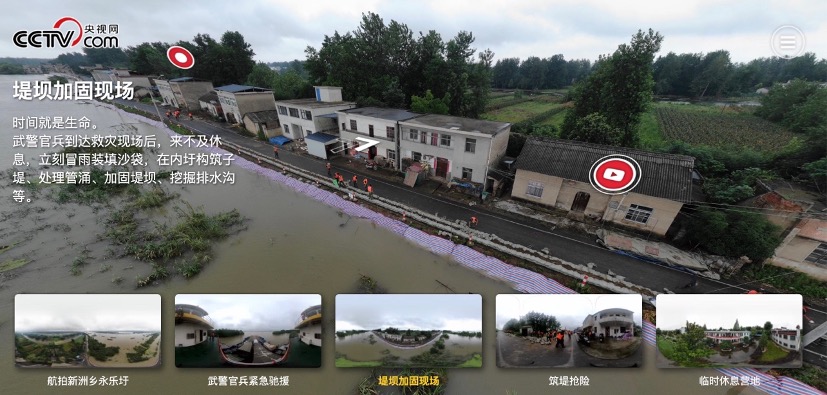
Similar VR channels have been established by other Party-state media. The VR channel at People’s Daily Online allows users full 360-degree tours of historical sites and government buildings, including the Great Hall of the People and the Beijing Natural History Museum – but it opens with a VR tour through a hall telling the story of Xi Jinping’s victory over Covid-19.
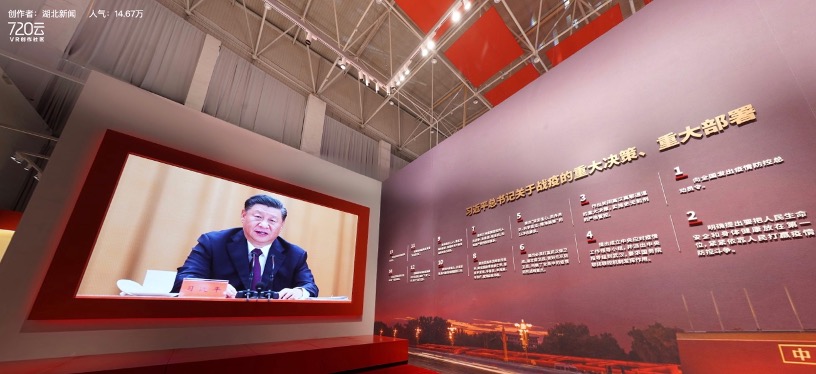
Next up on the “technical layout of content” list in the SIC report is a feature at People’s Daily Online called “Red Cloud Showroom” (红色云展厅), an interactive online experience similar to the above-mentioned VR projects that was specifically designed to commemorate the CCP centennial.
The “Red Cloud Showroom” is essentially an interactive list of provinces and municipalities and their various “red” sites – memorials to the history of the CCP and its glories. Click on Tianjin, for example, and you are taken to a page that includes a list of sites such as a memorial to Zhou En’lai, and another to the Battle of Pingjin. Pages for individual memorials include audio as well as text introducing the history and significance.
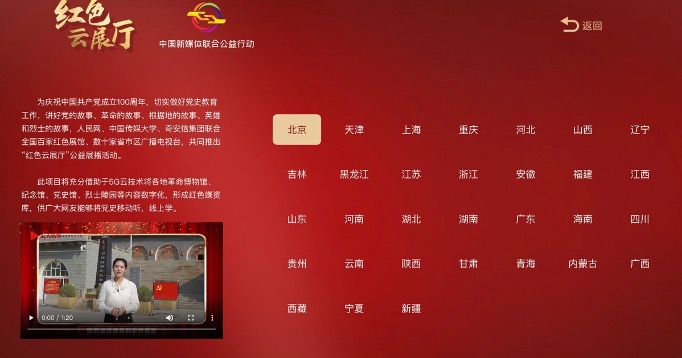
Serving the People
The SIC report also highlights efforts by online media to integrate news services with government services. It highlights, for example, the People’s Daily Online mobile app “People’s Daily Online+“ (人民网+), which draws together interactive services for areas like “rights protection” (维权), which refers in this case to direct interaction between Chinese consumers, companies and government agencies over consumer issues. Another service packaged under “People’s Daily Online+“ is “People’s Good Doctor” (人民好医生), a health app that purports to connect consumers with doctors from top-ranked hospitals.
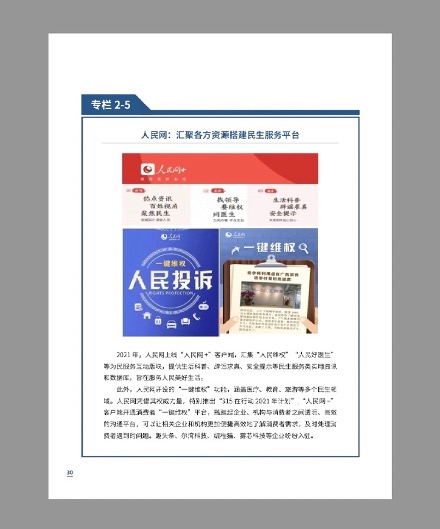
The SIC report also hypes a People’s Daily Online message board service that was created in September 2021 to serve as an information resource and reporting hotline during the Covid-19 outbreak in Fujian province. The purpose of the message board, said the report, was to “listen to the voices of the people,” and it included a function allowing users to leave messages to leaders from the local command center for Covid-19 control.
However, the recent breakdown of help hotlines in the midst of the Shanghai lockdown should urge caution in taking the effectiveness of such interactive features at face value. The SIC report simply notes the set-up by such features at Party-run online media, assuming efficacy, but does not provide meaningful data about their effectiveness in addressing public needs.





















